During history-based and cultural celebratory months like Women’s History Month, we have a habit of championing the achievements and experiences of the individual (often in a singular moment) instead of the collective group action over decades. I love to learn and share about a hidden figure or under-hyped person as much as the next. However, in choosing to highlight these moments so disproportionately, we leave behind all the people who come after and before them. Also, this attitude coincides with the same, deeply flawed individual “bootstraps” narrative put on “traditional” (typically dealing with white men, that is) American history.
So, while I’ll eventually share a biography or memoir (I love a good memoir), this time I wanted to share seven (or more) American History books that center on women! Some of these books focus on a group of women overall, and others focus on how women navigated a moment. All of these focus primarily on American History before the ’70s (though most go past that at the end), or this list would never end.
A Black Women’s History of the United States by Daina Ramey Berry and Kali Nicole Gross
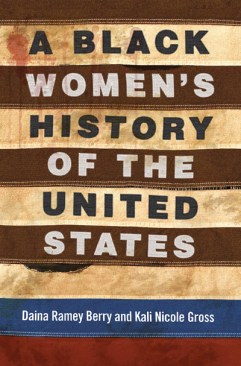
In A Black Women’s History of the United States, Two historians tell the story of the U.S. pre-1619 to 2000 through the lives and perspectives of Black women—pre-1619 because of the first Black woman who traveled from New Spain (Mexico) to a place that would become New Mexico in the U.S, Isabel de Olvera. They also address that issue of individualism at the expense of a singular narrative in the book. At the beginning of every chapter, the section begins with the story of a Black woman and then expands to other women’s conditions in similar circumstances and gives historical context. The authors prompt the readers to reflect on what privileges allow the initial chapter’s story to live on today.
So far, this ReVisioning History series has only published one book specifically regarding women, so I’m patiently waiting for more!
They Were Her Property: White Women as Slave Owners in the American South by Stephanie E. Jones-Rogers
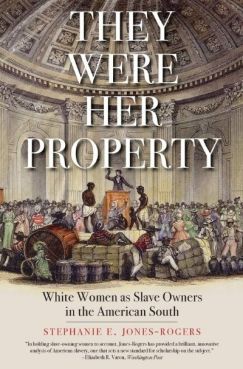
I don’t remember how I came across They Were Her Property, but I do remember finding it after reading A Black Women’s History of the United States. Jones-Rogers’ book shows readers not only that white women were cruel to Black women for more reasons than insecurity, but also participated in the cruelest aspects like torture and the slave market right alongside the men. It forces readers to contend with the reality of how the enslavement of Black women served white women. The book doesn’t just say that this treatment was wrong, because we already know that. Instead, it reminds us that the limited economic mobility and social power of free women came at the expense of other women.
From Eve to Evolution: Darwin, Science, and Women’s Rights in Gilded Age America by Kimberly A. Hamlin
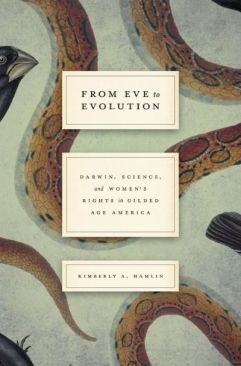
From biblical texts to Darwin’s theories, American society has always looked for guidance (and excuses) on what women’s role in the country should be. Often, this came in the form of men’s ideas and interpretations. However, women, at every turn, have had differing opinions on this place. Kimberly A. Hamlin’s From Eve to Evolution looks at how the women (specifically Darwinist first-wave feminists) interpreted Darwin’s theory and the science that came after it during the Guilded Age (approximately 1870 to 1900). Science and feminism don’t always go great together, as many of these women brushed up against (or outright advocated for) eugenics. However, the book still provides overlooked views from women during rapid scientific development.
Our Voices, Our Histories: Asian American and Pacific Islander Women edited by Shirley Hune, Gail M. Nomura
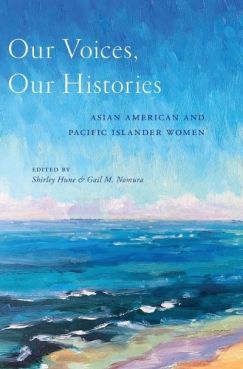
Similar to A Black Women’s History of the United States, Our Voices, Our Histories: Asian American and Pacific Islander Women takes a collection of stories to weave together a larger history. However, in this case, this serves as an anthology for 35 Asian American and Pacific Islander (AAPI) women to author their individual culture’s history, from the politics of language to the role of food and family (adoptees and generational stories). In addition to these histories as curated by the authors, each chapter introduces readers to a new AAPI author.
A Queer History of the United States by Michael Bronski
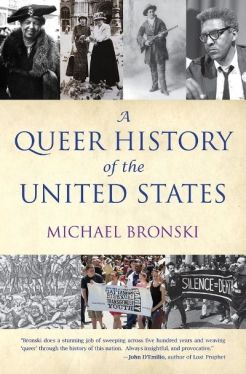
A Queer History of the United States examines how gender and the ever-changing concepts of femininity and masculinity shape American culture. Author Michael Bronski was a little too light on the pre-colonist time, in my opinion, but the book still provides excellent details on the lives and laws policing gender and then family. Other than the final chapters, which come back to a very timely thesis, one of my favorite sections features how gendered expectations shifted during and after industrialization. For the first time, so many unmarried people (within the U.S.) were living outside of the roof of their parents for work, and “boys” and “girls” clubs (including housing situations) popped up to make sure “morality” was still in check.
Like the other titles in this series, Bronski wrote for a general audience. However, if you want an even more reader-friendly version, check out A Queer History of the U.S. for Young People.
Public Vows: A History of Marriage and the Nation by Nancy F. Cott
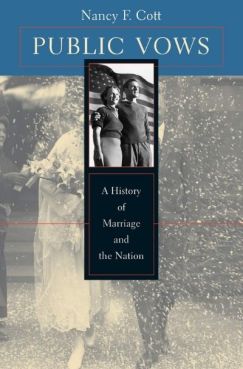
Speaking of the choices of married and unmarried women, this next book features all the ways the government (historically and currently) influences people’s marriage. If you think about it for more than a second, the government’s policymaking influences how, when, and if marriage is recognized—not just as a formal union but in terms of income tax and social safety net programs.
Cott published this in 2002, but lots of marriage-related issues have shifted since then, like same-sex marriage being federally recognized and the hyper-awareness of how marriage plays into the immigration system. Since the early days of COVID-19, disabled people have warned that this pandemic will affect shared healthcare and family dynamics. Many disabled people wanting to get married to long-term partners don’t because it will limit their access to life-or-death care. You can read some of their stories via #VowsYetPromised.
Lifting as We Climb: Black Women’s Battle for the Ballot Box by Evette Dionne
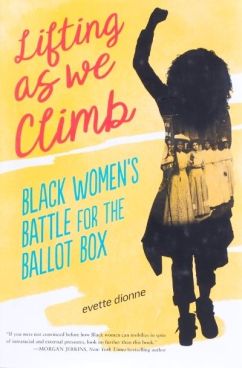
Written by then-editor-in-chief of Bitch Media Evette Dionne, Lifting as We Climb follows the history of voting for all women through the advocacy of Black women. The story begins before the end of slavery as white women abolitionists grew concerned that they would gain the right to vote after Black men and ends looking at the work of women through the Civil Rights legislation of the ’60s. Dionne writes this in such a way that the younger activist still in high school can learn about this history, but it’s still comprehensive. Also, the book connects the role of all Black women, regardless of social class, and the efforts of women today to ensure voting is made accessible.
Missing Chapters
Despite the millions of Indigenous, AAPI, and Latin American women (and others not seen as “white” at some point in time) who have and continue to be a part of American history, there are significant gaps in recent books detailing their history. Often, women’s experiences get a chapter in some books or individuals get mentioned rather than larger movements and histories. This gap exists in “regular” history books for consumers, but titles bridging that gap are abundant in academia. When putting together this list, I aimed to focus on accessibility, meaning I limited the inclusion of such titles. However, with so many gaps, I wanted to include them here in a separate section.
- No Mexicans, Women, or Dogs Allowed; The Rise of the Mexican American Civil Rights Movement by Cynthia E. Orozco (University of Texas Press)
- Empire of Care: Nursing and Migration in Filipino American History by Catherine Ceniza Choy (Duke University Press)
- Reproduction on the Reservation: Pregnacy, Childbirth, and Colonialism in the Long Twentieth Century by Brianna Theobald (University of North Carolina Press)
- Mothers without Citizenship: Asian Immigrant Families and the Consequences of Welfare Reform by Lynn Fujiwara (University of Minnesota Press)
- Daughters of the Shetl: Life and Labor in the Immigrant Generation by Susan Glenn (Cornell University Press)
—
Read something that we missed? Let’s share more books in the comments down below.
(image: Beacon Press, New York University Press, and Viking Books for Young Readers.)
—The Mary Sue has a strict comment policy that forbids, but is not limited to, personal insults toward anyone, hate speech, and trolling.—



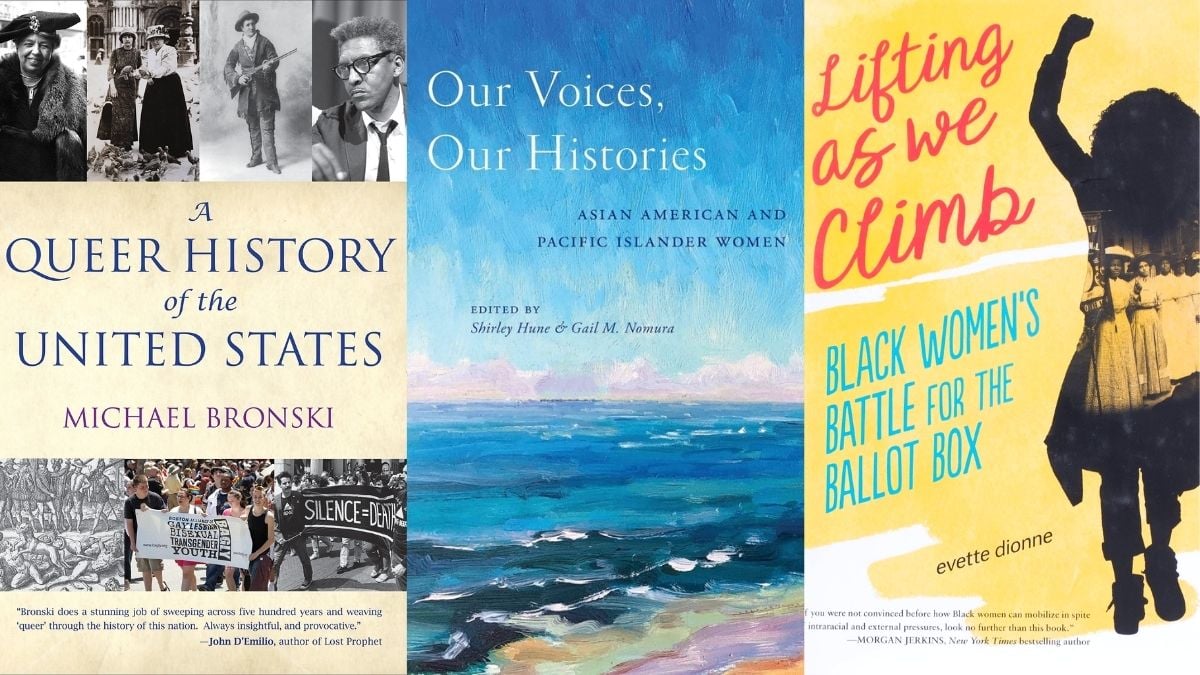






Published: Mar 23, 2022 02:42 pm